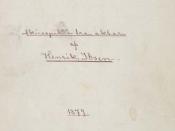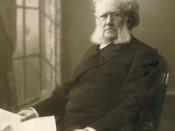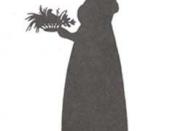A Doll's House as Tragedy
Henrik Ibsen's A Doll's House can be seen as defining modern tragedy, and Ibsen's innate ability at creating dramatic situations is evident in the fact that many of the conventions seen in theatre and television drama were developed within this play, some 120 years ago.
For instance, the popular BBC1 soap EastEnders recently featured a plot strand revolving around the fate of a letter left by the dead Tiffany, and whether this letter would be presented to the police or destroyed. Ibsen creates a near-identical scenario between Torvald and Nora concerning Krogstad's letter disclosing the details of her loan.
A development of these ideas can be traced in the preliminary notes Ibsen made before writing A Doll's House, entitled Notes for a Modern Tragedy (1878). This phrase itself appears ironic, even paradoxical: the tragedy is a classical literary form dating back to the time of the Greeks, when Aristotle gave his now famous definition of tragedy in terms of catharsis, namely the cleansing effect which explains the pleasure an audience derive from watching tragedy performed on stage.
This tragedy unfolds against an ancient, pre-Christian backdrop.
It is important to appreciate A Doll's House as a creature of its time; although still of value, it was written for (and concerns) Norwegian society at the turn of the century. With theatre, perhaps more than any other art form, an audience will construct their own meaning for a play based on their own cultural upbringings and belief systems. This argument can be carried to extremes, but it is important to realise that the world of Ibsen is not (necessarily) the world of today.
In Notes for a Modern Tragedy, Ibsen wrote:
[There are] two kinds of moral laws: one for men, and another (quite different) for...



Impressive
Really fantastic work!
Well written, incredibly detailed and extremely useful to anyone studying this wonderful Ibsen play. A bibliography would have been appreciated as you chose some really relevent quotes.
Congratulations on a great piece of writing!
5 out of 5 people found this comment useful.